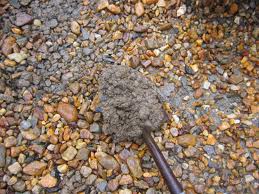How to Find Gold in Clay & Sand: Methods for Panning in Rivers

 Sometimes, when you are panning for gold in a river, creek or a stream, you will find clay sticking to the material you’ve dug up or panned. Its best then to dump your “diggings” into a pail of water. (Yes, with all of the digging up soil and breaking up clumps of grass and dirt, gold prospecting can sometimes resemble gardening). Add a drop of liquid detergent soap (to act as a “wetting agent”) then scrub the rocks against each other until the clay is dissolved.
Sometimes, when you are panning for gold in a river, creek or a stream, you will find clay sticking to the material you’ve dug up or panned. Its best then to dump your “diggings” into a pail of water. (Yes, with all of the digging up soil and breaking up clumps of grass and dirt, gold prospecting can sometimes resemble gardening). Add a drop of liquid detergent soap (to act as a “wetting agent”) then scrub the rocks against each other until the clay is dissolved.
Pour off the muddy water, very carefully, as the gold flakes, dust or nuggets that still might have the clay-coating will slip away and be lost back to the river.
Keep the properties of gold uppermost in your mind as you study the river and while working:
–gold is more than three times heavier than the black sand it is found with
–gold “falls out” after swift water has slowed down
–gold works its way down through the overburden, and it is always close to bedrock
Practice patience so as not to overlook any important clue the river gives to you!
It’s there for the digging.
It can be yours without filing a claim, without a mining permit (unless you are using a dredge) and you can sell it, keep it, or give it away.
Oh, and it’s a fascinating game of trying to think and out-wit the river for its gold!
Finding gold in the clay or sand of rivers, creeks and streams doesn’t have to be as difficult as you think it might be. Keep at it, practice the right methods, and those nuggets and flakes will eventually come to you. More than anything else, though, you need to remember to have fun. If you don’t enjoy prospecting for gold, and if you’re only doing it to get rich, you probably won’t have much luck.

